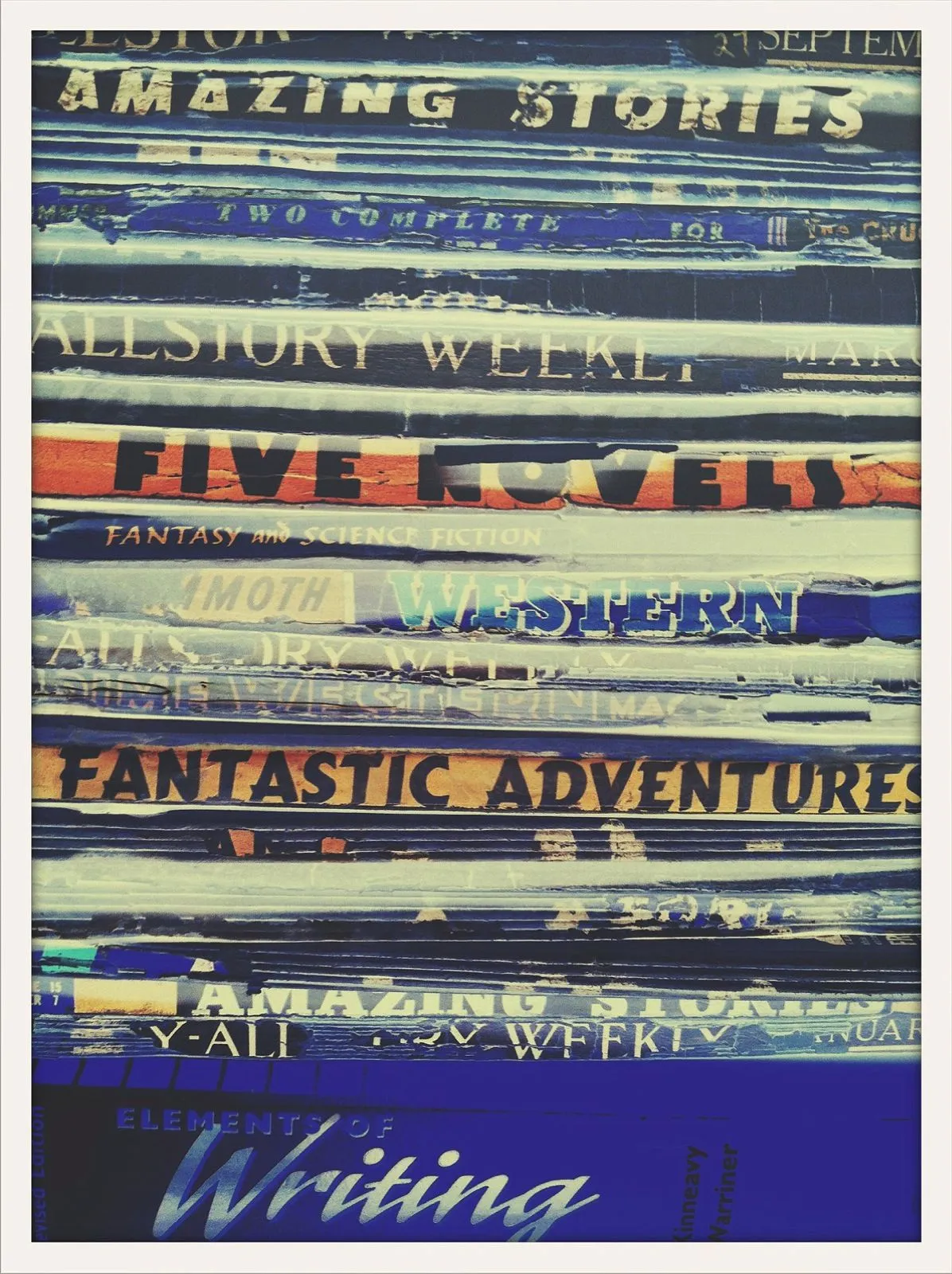Stratifiction

Stratifiction explores the layered physicality and narrative density of vintage pulp magazines. By compressing time, genre, and typography into a single visual stratum, the image invites reflection on how cultural memory is archived, degraded, and reimagined through the material remnants of storytelling.
In Stratifiction, the visual language of pulp fiction is sedimented into a tightly packed stack of vintage magazine spines, forming a photographic composition that reads as much like a cross-section of popular imagination as it does a record of material culture. Rendered in soft, filtered tones with distressed textures, the image compresses decades of genre fiction—sci-fi, fantasy, westerns, and literary instruction—into a single frame. The title, a hybrid of “stratification” and “fiction,” offers a conceptual entry point: this is not just a photo of aging print matter, but a layered meditation on storytelling as both cultural sediment and ideological structure.
The composition relies on the vertical rhythm of spine edges—some frayed, others faded, many cracked or worn—to evoke a sense of time’s physical imprint. The viewer’s eye is drawn horizontally across the image, decoding partial titles such as Amazing Stories, Five Novels, and Fantastic Adventures. Each layer suggests a stratum of narrative, genre, and historical moment. The text fragments function like archaeological markers, revealing not only what was once read, but how it was categorized, commercialized, and consumed.
Color plays a significant role in shaping the work’s mood. Dominated by deep blues, dusky oranges, and worn yellows, the palette feels aged but not lifeless. These tones are reminiscent of both decaying print and the dreamlike hues of old comic book covers, bridging the gap between ephemerality and durability. The tactile quality of the image—creases, tears, rubbed-off ink—emphasizes the physical labor of reading, collecting, and archiving. This is literature as object, object as relic.
Formally, the image flattens time. Genres that once occupied distinct cultural spaces are collapsed into proximity, allowing a western to sit atop a science fiction digest or a fantasy tale to lean against a guide on writing. The layering collapses the borders between forms and periods, suggesting that fiction’s divisions are ultimately porous, contingent, and artificial. The viewer is left to construct a narrative from fragments, echoing the way memory and influence operate in the real world.
Conceptually, Stratifiction can be read as a visual palimpsest—a site where stories overwrite one another, leaving ghost traces. It reflects the cultural role of pulp fiction as both disposable and foundational. These were cheap magazines meant to be read and discarded, yet they shaped generations of writers, readers, and ideologies. Their sensational covers and serialized formats democratized storytelling while reinforcing dominant tropes of the time: heroism, conquest, alien invasion, and the frontier.
There’s a quiet irony in the preservation of these forgotten texts. While their individual stories may be lost or irrelevant, their physical shells endure, becoming symbols of an analog era now mythologized in its own right. In this sense, the photograph acts not just as documentation, but as reanimation—restoring vibrancy to cultural materials otherwise on the brink of oblivion.
The inclusion of a visible spine labeled Elements of Writing anchors the image in a meta-narrative. Amid the fiction lies a manual, a guide to the very craft that generated the surrounding noise. This placement underscores a self-reflexive tension: the photograph is not only about what was written but about how writing itself becomes material, both in process and preservation.
Ultimately, Stratifiction invites viewers to consider how fiction shapes collective memory—not just through stories told, but through the debris left behind. It reminds us that meaning often resides in the margins, and that the artifacts of popular culture may outlast the very myths they once perpetuated.
Essay written: May 2025